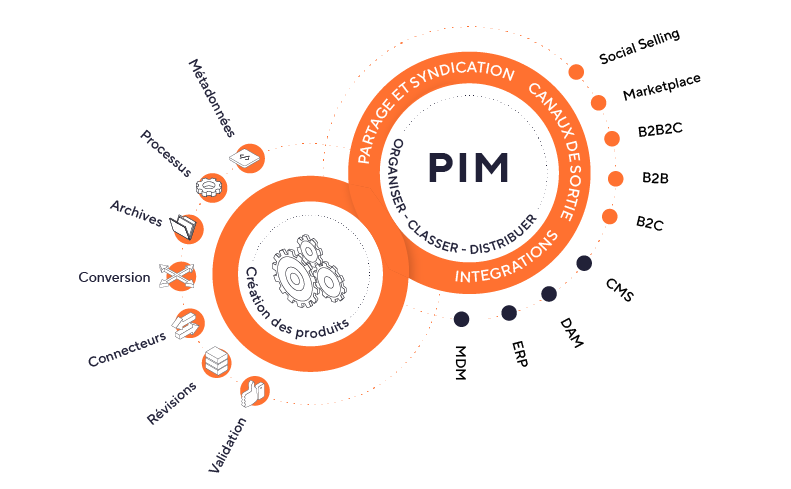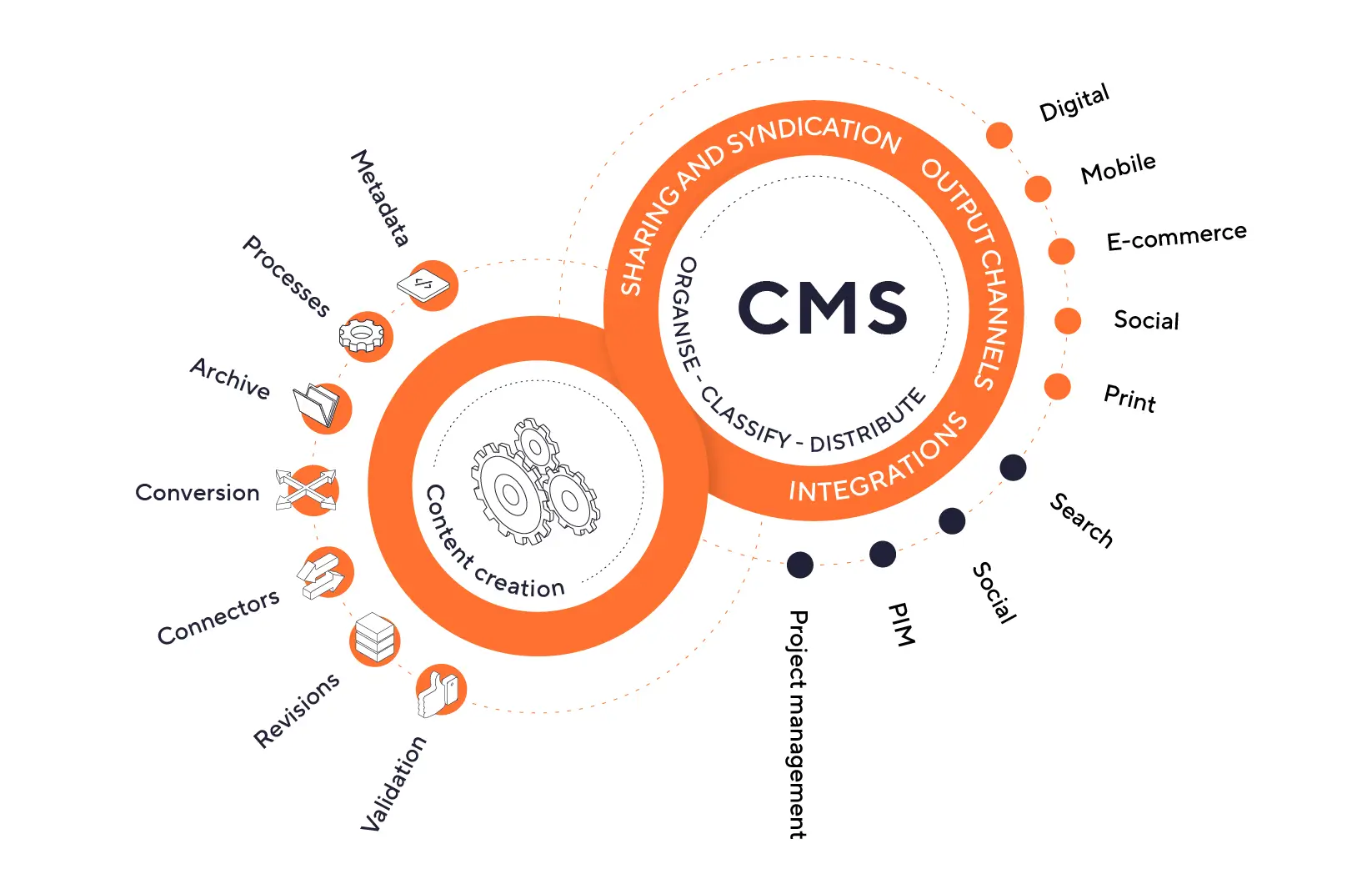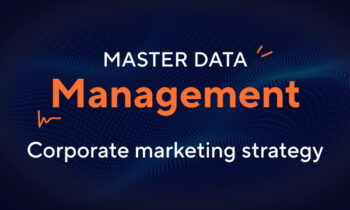What is a data repository?

Companies are collecting, distributing, and sharing an ever-growing amount of content across both online and offline channels. For this reason, reference data is now at the core of marketing strategies.
But what are the current data repository management solutions? And most importantly, what makes them unique?
-
PIM
The PIM system enables the management and distribution of product information across all sales channels: e-commerce websites, catalogs, etc.
-
DAM
The DAM system allows companies to store, organize, and share their digital assets in a centralized way.
-
MDM
The MDM system manages and distributes an organization’s reference data, encompassing the functionalities of PIM, DAM, and CMS.
-
CMS
The CMS system allows users to create, manage, and update content, and publish it on websites or mobile applications.
What is a data repository?
A data repository refers to a set of isolated data to be used for reporting and analysis. It is a large infrastructure composed of multiple databases that collects, manages, and stores datasets to be utilized, analyzed, and shared.
The information architecture is essential for promoting and selling your products and services. The structure of your data and metadata should be tailored to your business needs: purchasing, products, communication, marketing, packaging, legal, sales, logistics, translation, and more.
The quality of your decisions heavily depends on the quality of your data. For this reason, a data repository is part of a data quality process. Here are some key data quality criteria to consider:
- Accuracy: Is the data reliable?
- Completeness: Is all necessary data gathered?
- Consistency: Does the data contain duplicates or variations?
- Integrity: Are the data sets coherent with each other?
A data repository should anticipate the multiplication of marketing data and adapt to a constantly evolving martech environment (marketing technologies). By centralizing data in a single repository, companies can avoid data dispersion across multiple databases, prevent system failures, and overcome the challenge of achieving a unified classification.
The benefits of using a data repository
Implementing a data repository allows you to:
- Increase efficiency
- Improve business processes
- Leverage new technologies
- Manage risks
- Take control of your data
- Comply with GDPR regulations regarding data protection and privacy
- Ensure and enhance the quality of reference data
What data repository management solutions exist?
To determine the best data repository management solution for your needs, it’s essential to identify the different types of marketing and commercial data repositories available.

MDM for Master Data Management
Master Data Management (MDM) is a solution for managing marketing, product (composition, ingredients, price, stock, user manuals, schematics), customer, employee, supplier, manufacturer, and media data (images, videos, audio files, locations, etc.).
What is Master Data Management?
MDM centralizes data within a single database, eliminating silos across departments. By encompassing the concepts of PIM and DAM, MDM ensures that reliable, secure, and high-quality data is used and shared across various departments in the company.
A Master Data Management solution allows businesses to oversee the management of reference data within their information systems.

PIM for Product Information Management
The PIM (Product Information Management) system enables companies to create, store, and manage all product-related data.
What is Product Information Management?
PIM supports an omnichannel approach, making it easier to distribute product data across all sales channels: e-commerce websites, printed product catalogs, websites, marketplaces, packaging production, and more.
The PIM also allows companies to restrict data access to different internal departments based on their needs.
More specifically, the PIM centralizes and harmonizes all product information, ensuring that all published content is always up-to-date and optimized for natural search (SEO).

DAM for Digital Asset Management
The Digital Asset Management (DAM) system is designed for managing and storing digital assets within a company. By improving employees’ working conditions, the DAM centralizes all digital content such as images, videos, and audio files.
What is Digital Asset Management?
The DAM system allows companies to quickly and securely share digital assets within their organization (images, videos, audio files, etc.). It provides marketing, sales, and creative teams with convenient and regulated access to all of the company’s digital content.
The DAM also automates media adaptations for various channels. For example, an image is stored once in high resolution on the platform and is then automatically resized and adapted according to the specific requirements of each channel where it will be used.

CMS for Content Management System
In the MDM context, the CMS (Content Management System) refers to the part of the data model that handles content management. Like all data managed within the MDM, content data is transmitted to different output channels, including e-commerce CMS platforms, also known as e-commerce solutions.
What is a Content Management System?
The CMS plays a key role in managing and distributing information and data for marketing purposes. A strong strategy is built around MDM (Master Data Management), incorporating the following concepts:
- DAM (Digital Asset Management) for organizing and distributing media and documents
- PIM (Product Information Management) for qualifying and aggregating product data
- CMS (Content Management System) as the brand’s portal
The CMS allows companies to structure the content of a website, such as categories, FAQs, blog articles, and more.
💡 To go further…
CRM for Customer Relationship Management
A CRM software is used by companies to manage and analyze customer interactions and data throughout the customer lifecycle. The goal is to improve customer relationships, foster loyalty, and drive sales growth.
CRM systems compile customer data from various touchpoints between the customer and the company, such as the company website, phone calls, live chat, direct mail, marketing materials, and social media.
A CRM easily integrates with solutions like MDM, PIM, DAM, or CMS, creating a complementary ecosystem that makes the entire system more efficient.
ERP for Enterprise Resource Planning
To understand what an ERP software is, it’s important to take a step back and think about all the different processes essential to running a business. These include inventory and order management, accounting, human resources, and customer relationship management (CRM).
At its core, an ERP system integrates these different functions into a unified system to streamline processes and information across the entire organization.
Like the CRM, ERP systems are often already in place within companies. However, they are not to be overlooked! An ERP system can interconnect with all data repositories, facilitating the flow of information and data across all departments.
How to create, define, and implement a data repository?
Implementing a single data repository through an MDM (Master Data Management) solution is now essential for companies to facilitate data access, usage, and distribution across various channels and departments.
The deployment of a data repository starts with identifying your company’s specific needs. Such a project typically begins with an audit workshop to assess your IT marketing maturity. This phase is crucial for creating a diagnostic that will help define an architecture and action plan to strengthen your marketing and commercial IT ecosystem in alignment with your strategic goals.
These initial discussions are essential for creating your data repository. They will help identify user needs, adapt the solution to your internal processes, and establish a complete roadmap for the project.
The internal organization, process evolution, and change management require the most effort when implementing a unified data repository. External support can greatly facilitate team engagement and save time in building your data repository project.
To design a Marketing Production Platform that fits your needs, rely on our qualified experts and discover our project methodology here!


